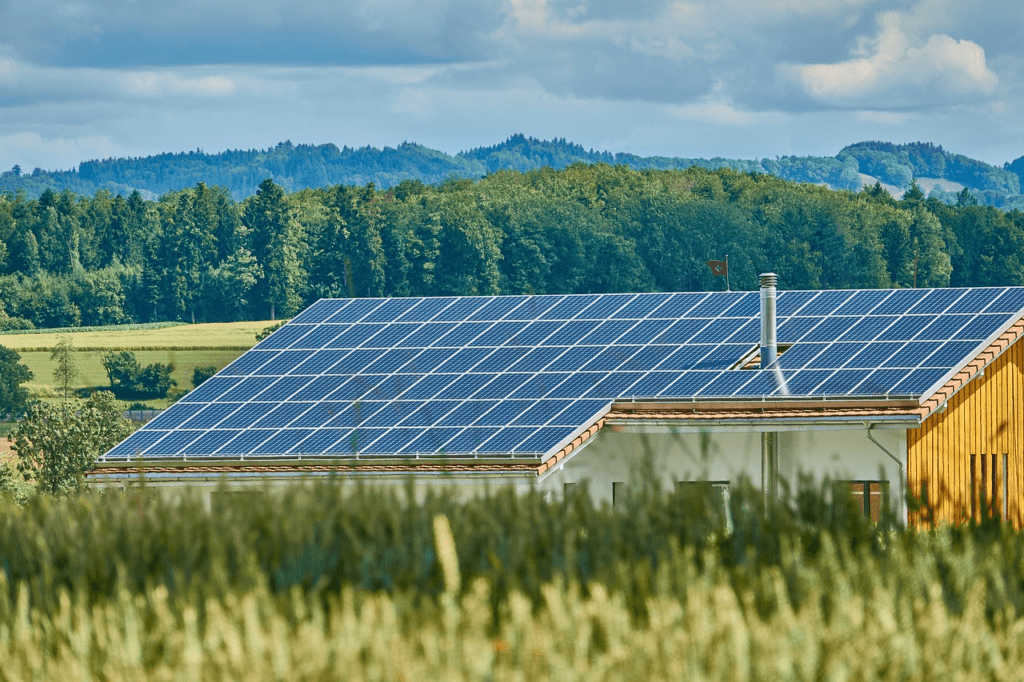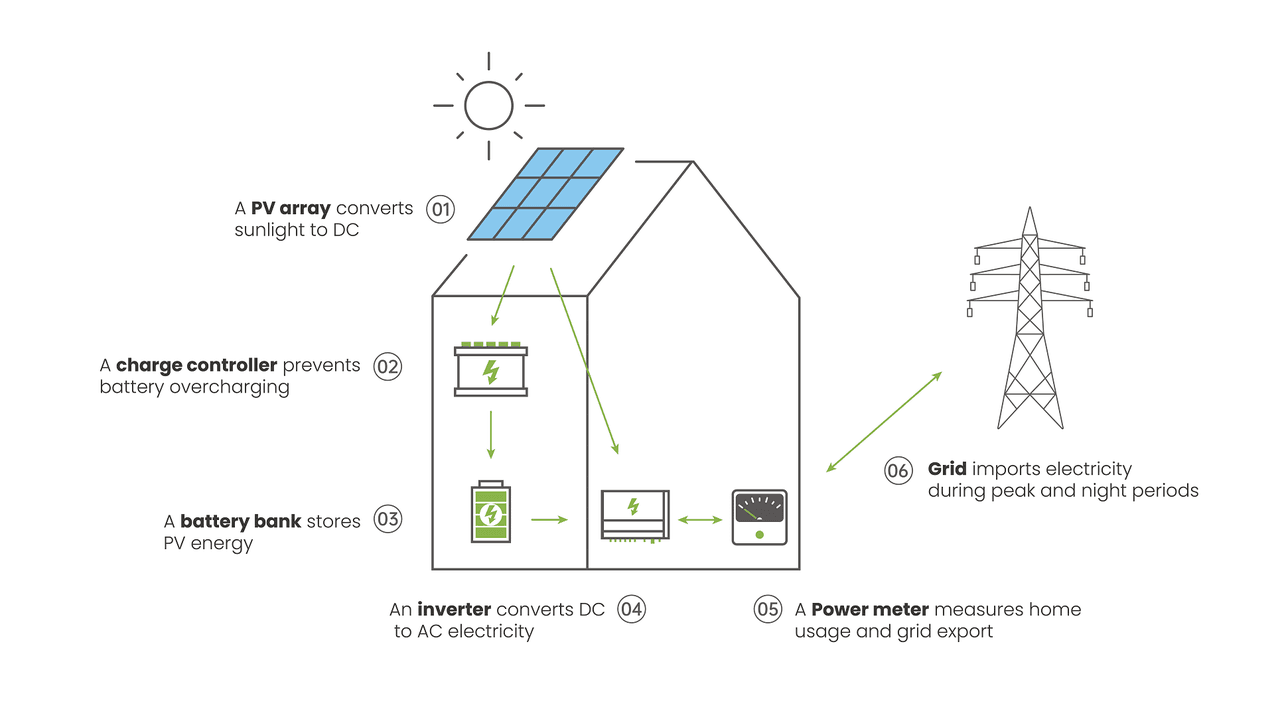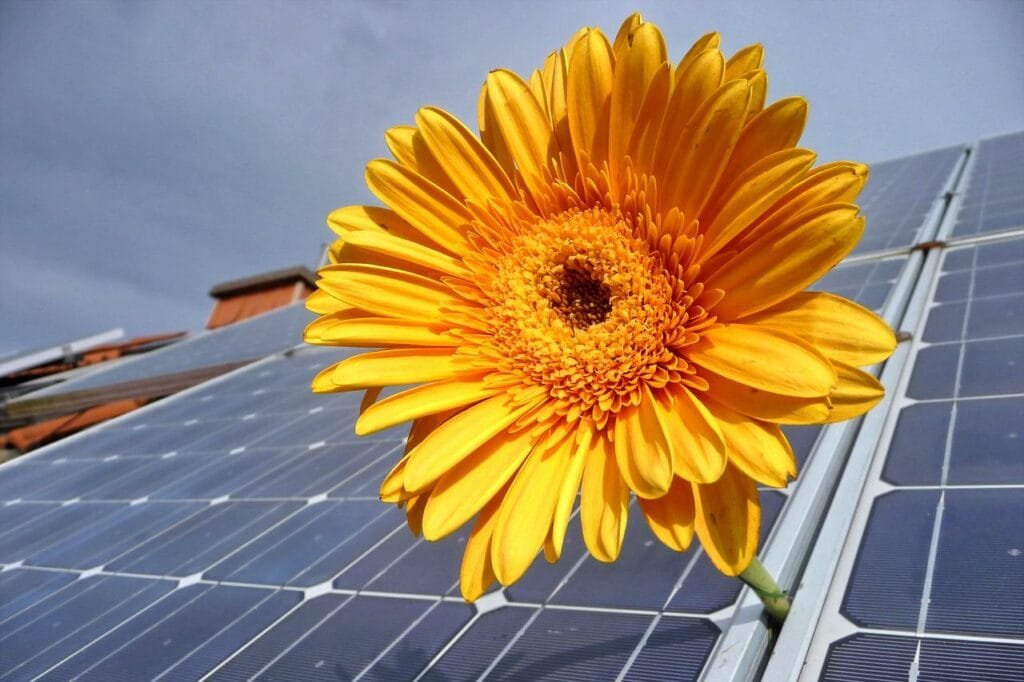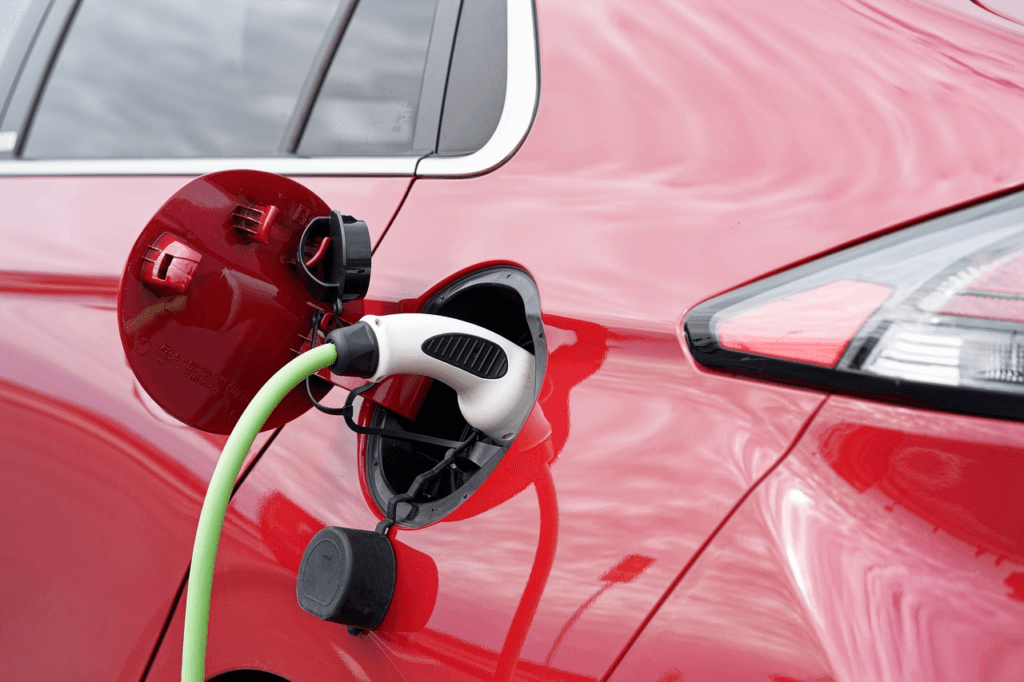Electric vehicles (EVs) are becoming more popular as a way to reduce greenhouse gas emissions and save money on fuel. However, charging an EV still requires electricity, which may come from fossil fuels or renewable sources. One of the most promising renewable sources is solar energy, which can be harnessed by installing solar panels on your property or using public charging stations powered by solar farms. In this blog post, we will explore the benefits and challenges of EV charging with solar energy, and provide some tips on how to do it efficiently and effectively.

What Is PV SystemsAnd How Do They Work?
A photovoltaic (PV) system is a technology that converts sunlight directly into electricity using solar panels. Here’s a simple breakdown of how it works:
- Solar Panels: These are made up of many solar cells that capture sunlight. Each cell contains a semiconductor material, usually silicon, that generates electric currents when exposed to sunlight.
- Inverter: The electricity generated by the solar panels is in direct current (DC) form. An inverter converts this DC electricity into alternating current (AC), which is what most home appliances and EV chargers use.
- Electrical Panel: The AC electricity is then routed to your home’s electrical panel, where it can be used to power your home, stored in a battery for later use, or directed to your EV charger.
- Battery Storage: A battery storage system can be added to store excess solar energy generated during the day, allowing you to charge your EV at night or during cloudy days when solar generation is lower.
PV systems are a sustainable way to produce electricity, reducing dependence on fossil fuels and lowering greenhouse gas emissions. They can be installed on rooftops, in open spaces, or even integrated into building materials, making them a versatile option for many homeowners.

How Does Solar Energy Charge Electric Cars?
Now, solar-charging your electric car is pretty easy. You just install solar panels on your roof or in your yard, and they absorb sunlight and convert it into electricity, which is then converted by the inverter from direct current (DC) to alternating current (AC) because that’s the form of power your house and car charger utilizes. When you plug in your EV, it charges using this solar power. Excess solar generated during the day is stored, if you have a battery storage system, to be used later when it is dark or cloudy. This way, you’re driving on clean, renewable energy, hence, cutting down your electricity bills and doing the utmost for the environment.
Why Charge Your EV with Solar Power?3 Key Benefits
1. Reducing Energy Costs
Installing solar panels allows you to generate electricity from the sun, which is far cheaper than using fossil fuels or buying power from the grid.
Let’s say a typical solar panel in North America produces about 300-400 W. If we install a 2 kWp PV system (kilowatt peak, maximum power under best conditions), which would require an area of about 12-14 m2, it could produce approximately 2,500 kWh of solar power per year. With this amount of energy, we could fully charge a Tesla Model 3 about 10 times, providing a driving range of approximately 6,000 km, with an average consumption of 21 kWh per 100 km.
The expansion of renewable energy production is in the best interest of governments worldwide to reduce our dependence on fossil fuels. In response to that, many countries offer subsidies and grant schemes to individuals and businesses to install both PV systems and EV charging infrastructure.
For example, in the US, the Federal Solar Tax Credit allows customers to deduct 26% of the cost of installing a solar energy system from their federal taxes. For example, if your PV system costs $10,000, you can reduce your tax liability by a whopping $2,600.
The EU also supports solar energy through measures such as making the installation of solar panels on the rooftops of new buildings obligatory within a specific timeframe, streamlining permitting procedures for renewable energy projects, improving the skills base in the solar sector and boosting EU’s the capacity to manufacture photovoltaic panels.

2. Less Dependence on the Grid
Installing an onsite solar system with battery storage provides greater flexibility in energy usage. Typically, solar production follows a pattern of starting in the morning, peaking at midday, and declining as the sun sets. However, with battery storage, any excess energy generated during peak hours can be stored and used to meet energy needs during periods of lower solar production. This reduces or eliminates the need to draw electricity from the grid, resulting in cost savings and a lower carbon footprint.
By utilizing battery storage, businesses can optimize their energy usage and reduce their reliance on traditional energy sources. This gives you backup power when the grid fails, and lets you charge your electric car even during a blackout.
3. Environmental Advantages
Here are some of the environmental benefits of using solar energy to charge your EV:
- Does not emit greenhouse gases or pollutants
- Reduces carbon footprint and fossil fuel dependence
- Has zero production costs and low energy loss
- Has minimal environmental disruption

How to Charge Your Electric Car with Solar Power?
To charge an electric vehicle (EV) with solar power, you will need to install a solar photovoltaic (PV) system. Here are the steps to follow:
- Install a solar PV system: This involves installing solar panels on your roof or in a ground-mounted system that captures sunlight and converts it into electricity.
- Connect the solar PV system to an inverter: The inverter converts the direct current (DC) electricity produced by the solar panels into alternating current (AC) electricity that can be used to charge an EV.
- Install an EV charger: You will need to install an EV charger that is compatible with your vehicle and can be connected to the AC power produced by the solar PV system.
- Connect the EV charger to the inverter: The EV charger should be connected to the inverter so that it can receive AC power from the solar PV system and charge your EV’s battery.
- Monitor your system: It is important to monitor your solar PV system and EV charger to ensure they are working properly and efficiently.

Conclusion
Charging electric vehicles (EVs) with solar power is becoming increasingly popular and is supported by government regulations in some countries. For instance, the Renewable Energy Act in France mandates that public car parks with over 80 parking spaces install photovoltaic (PV) systems or face severe penalties.
EN Plus offers PV EV charging solutions that provide a sustainable and cost-effective way to charge your EV. PV systems are environmentally friendly and can help reduce your electricity costs. Additionally, they can ensure that your EV’s battery is consistently charged and ready to use.
By utilizing PV systems to charge EVs, we can reduce our reliance on traditional energy sources and lower our carbon footprint. This provides a sustainable solution for meeting our transportation needs while contributing to the global effort to combat climate change.


